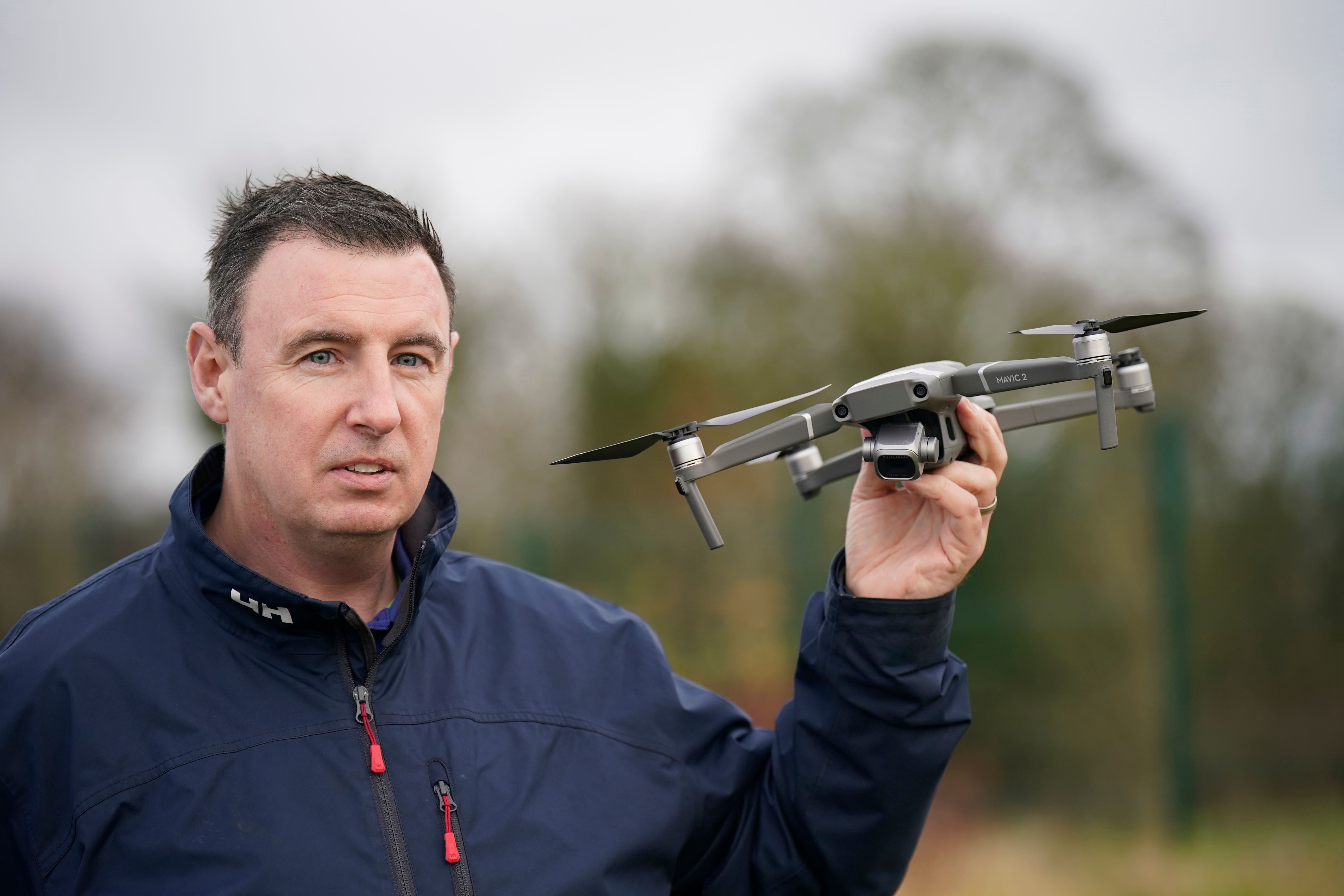Major changes for drone rules do not fully negate privacy concerns, expert says
Many commercially-available drones sold prior to January 1 will already have ‘C-class’ markers or stickers.

Your support helps us to tell the story
From reproductive rights to climate change to Big Tech, The Independent is on the ground when the story is developing. Whether it's investigating the financials of Elon Musk's pro-Trump PAC or producing our latest documentary, 'The A Word', which shines a light on the American women fighting for reproductive rights, we know how important it is to parse out the facts from the messaging.
At such a critical moment in US history, we need reporters on the ground. Your donation allows us to keep sending journalists to speak to both sides of the story.
The Independent is trusted by Americans across the entire political spectrum. And unlike many other quality news outlets, we choose not to lock Americans out of our reporting and analysis with paywalls. We believe quality journalism should be available to everyone, paid for by those who can afford it.
Your support makes all the difference.Sweeping rule changes for the flying of drones are welcome but do not go far enough, according to the chairman of the Irish Professional Drone Pilots Association (IPDPA).
From January 1, requirements that govern the use of drones for most hobbyists in the EU will change when the current temporary weight-class system expires.
IPDPA chairman Fergal McCarthy said: “Most of the changes will impact hobbyists more than commercial operators but are certainly things that may grant the public a bit more peace of mind.”
Many commercially-available drones sold prior to January 1 will already have “C-class” markers or stickers meaning they are fully compliant with the new regime.
However, other popular drones by major manufacturers may not have the compliance stickers and could be subject to flying restrictions.
Old “legacy” drones put on the market before January 1 without a classification mark, or drones that are privately manufactured, may still be flown in the new year but will be subjected to some limitations depending on their weight.
Drones without classification marks which are lighter than 250g may not fly over crowds of people while drones between this weight and 25kg may only fly far from people – unless a further special certification is acquired.
A separate requirement which makes it easier to identify the owner of drones also comes into effect from January 1.
All drones marked C1, C2 and C3 – which cover drones heavier than 250g – as well as those flying below 120m from the ground will be required to operate with active remote identification, or “remote ID”.
This system locally broadcasts information about the drone, such as its position and the operator registration number.
This is done to help identify drones flying in breach of safety and privacy rules.
Mr McCarthy said: “There will be a requirement for operators to upload their registration number to the remote ID controller. Obviously, people with nefarious intent are going to ignore it but people flying compliantly will do it.”
Drones sold with the C1, C2 and C3 mark are required to have this system built-in by the manufacturer but it is also possible to buy attachable remote ID modules for older drones.
Mr McCarthy said: “I’m in favour of direct remote ID, so long as it is for everybody. I see this as helping the public acceptance of drones.
“If a member of the public thinks a drone is invading their privacy, they can get an app and detect that and report it.”
However, Mr McCarthy said many smaller “C0”-class drones will be exempt from the remote ID rules, along with some legacy drones which have the other restrictions on how close they can fly to people.
He said the most popular drones for the majority of hobbyists are so lightweight that they will be exempt from the new remote ID rules and could end up being used to breach people’s privacy.
“The cameras on these small drones are so good now and, actually, you’re more likely to invade someone’s privacy with a smaller drone because they’re quieter – they can they can be there and not know it.
“You’re now basically saying they don’t have to broadcast their location, so people are obviously going to be going towards those drones more and more.
“So, the risk of them falling and hurting someone is negated by it being lighter but it can still invade people’s privacy, the same as a bigger drone.”
He believes remote ID should be a requirement for all drones.
“There is still this bigger problem of invasion of privacy and that’s where there is still concern. It doesn’t address people loitering, hovering over gardens.”
While there is still a need for lightweight drones fitted with cameras to be officially registered, Mr McCarthy said the lack of requirement of official training beyond reading the user manual, coupled with the absence of remote ID, is “counter-intuitive” regulation.
Raising concern about the risk of increased non-compliance, he called for enhanced training in this weight class which would tell people where they cannot fly their drone.
“On one hand, you’re saying they don’t need remote ID and then at the same time saying we’re not going to train them where they can and cannot fly – it seems a retrograde step to be taking that training away.”
There are already smartphone apps which allow members of the public to pick up remote ID signals from compliant drones, but Mr McCarthy says the apps do not work on all phone models.